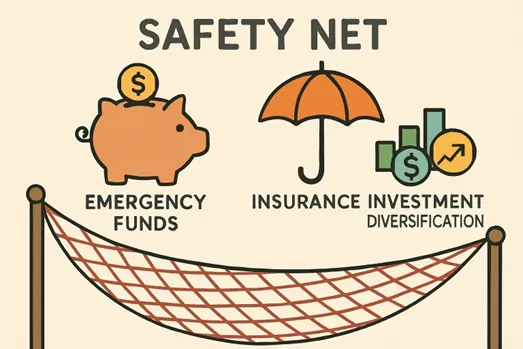Build a Safety Net: The Real Need for Financial Plans
Understanding the Importance of a Financial Safety Net
Life’s unpredictability can threaten even the best-laid financial plans. Major disruptions—medical bills, job loss, family emergencies—can happen at any time. Without a solid financial buffer, these circumstances might derail long-term aspirations or force you into debt. Proactively building a safety net provides invaluable peace of mind, allowing you to face challenges with confidence, knowing you have the resources to recover.
If you’re unsure how to get started or need guidance tailored to your specific needs, speaking with a financial expert can help you map a secure path. Consider consulting an advisor such as Aaron Werner Financial Advisor. A trusted expert can provide a clear plan and accountability as you work toward your goals. Building this financial foundation doesn’t happen overnight, but consistent small steps can make a significant difference over time. By prioritizing preparation today, you create greater stability and freedom for your future.
What Constitutes a Financial Safety Net?
A financial safety net is not just about hoarding cash—it’s a multi-layered system meant to protect against a variety of threats. Core components include:
- Emergency Fund: Readily accessible savings for unforeseen expenses, such as car repairs or temporary job loss, are crucial for maintaining financial stability. Building an emergency fund ensures that individuals can handle these unexpected challenges without resorting to high-interest debt or draining long-term investments. Helpful resources, like the Consumer Financial Protection Bureau, provide practical steps for setting aside money gradually and creating a reliable financial safety net.
- Insurance: Coverage for health, property, disability, and life provides critical protection when significant, unexpected expenses occur.
- Diversified Investments: Spreading out your investments reduces risks and provides a cushion during market downturns.
Each layer supports your overall stability, providing both immediate relief and long-term resilience.
Steps to Build Your Financial Safety Net
- Assess Your Financial Situation: Take an honest inventory of your income, monthly expenses, outstanding debts, and existing savings. Careful assessment is the foundation for effective planning.
- Set Clear Goals: Determine how much you need for emergencies (typically 3-6 months of expenses) and identify what insurance policies you may need to fill any critical gaps.
- Create a Budget: Map out a realistic plan allocating regular contributions toward your safety net while still meeting daily obligations. Use budgeting tools or apps for added discipline and visibility.
- Automate Savings: Arrange for direct transfers of a fixed amount into your emergency or savings account each month. Automation removes the temptation to skip contributions and leads to consistent growth.
- Review and Adjust: Life circumstances change—review your plan at least annually or after any significant life event (job change, marriage, having children) to ensure your safety net remains robust.
Common Challenges and How to Overcome Them
Building a financial safety net is not always easy, especially when dealing with limited income or overwhelming expenses. The most common barriers and strategies to address them include:
- Limited Income: Begin with small, regular contributions—no amount is too small. The act of saving consistently is more important than the initial amount, and over time, these funds will accumulate.
- High Expenses: Audit your spending and identify non-essential items you can trim or eliminate outright, funneling those savings into your emergency fund.
- Lack of Financial Knowledge: Partner with a professional or access reliable education sources to build your understanding.
Real-Life Examples of Financial Safety Nets in Action
Consider the story of a single parent who had saved enough in their emergency fund to cover three months of living expenses. When they were faced with a sudden layoff, that buffer meant bills continued to be paid, groceries stayed on the table, and their credit remained intact. The time and energy that could have been spent stressing over finances was instead focused on finding a new job, allowing them to quickly regain footing without resorting to high-interest loans or credit cards.
Countless others have found stability simply by preparing in advance. Whether it’s covering the costs of unexpected illness or managing housing repairs after a disaster, those with a robust safety net report less stress and a faster return to normalcy.
Conclusion
Creating a financial safety net is one of the most important steps you can take to ensure long-term stability and peace of mind for yourself and your loved ones. By assessing where you stand, setting achievable goals, and committing to incremental action, you’ll build resilience against whatever financial uncertainties may arise. Start small if you need to, seek experienced support, and let your disciplined efforts provide the security and freedom necessary to thrive no matter what life brings.
Read more: From Hashtags to Handouts: How Social Media Trends Are Driving Custom Merchandise – SizeCrafter
The Complete Beginner’s Guide to Buy Crypto in 2025 – SizeCrafter
Why Sorting Isn’t Editing: Streamlining Your Photography Workflow With Automation – SizeCrafter

